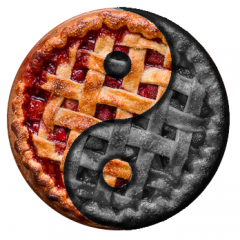PSC Motors and How to Properly Test a Capacitor
PSC (Permanent Split Capacitor) motors are nifty pieces of technology that you'll most often encounter in Whirlpool's VWM washers. They operate a bit differently from your typical split-phase motors. Rather than having a dedicated start winding and run winding, with each winding having different specifications, PSC motors have two windings that are physically identical. The only difference between them is in what direction the windings are wound.
Another big difference between PSC motors and typical split-phase motors is that PSC motors don't require any kind of start device. Both windings can be kept energized the entire time, with the capacitor phase-shifting the current going through one of the windings in order to create starting torque.
Clearly, the capacitor is the star of the show with these motors, which makes it crucial that you know how to correctly troubleshoot it. A bad capacitor in a PSC motor can cause issues such as agitation in only one direction.
A typical test is to put your multimeter on the ohms setting, then put your probes on either side of the capacitor and watch the resistance increase from very low to very high. Then you reverse the leads and do the same thing again. There's a problem with this test, though: it's not 100% reliable. A capacitor can pass this test and still be faulty. So basically that means it's not a useful test.
To test a capacitor with complete reliability, you have to measure the capacitance. That means setting your multimeter to its capacitance setting, putting your leads on either side of the capacitor, and letting your meter calculate the actual capacitance of the component. Then you compare that reading with your spec, which is almost always printed right on the capacitor itself.
Don't worry -- we're not talking about a specialty tool here. Any multimeter worth its salt should have a capacitance setting. If yours doesn't, perhaps that's a hint that you should upgrade...
Want to learn more about PSC motors, capacitors, motors in general, and much more? Watch this enlightening webinar recording, one of many available only to premium members of Appliantology.
-
.png) 3
3






4 Comments
Recommended Comments